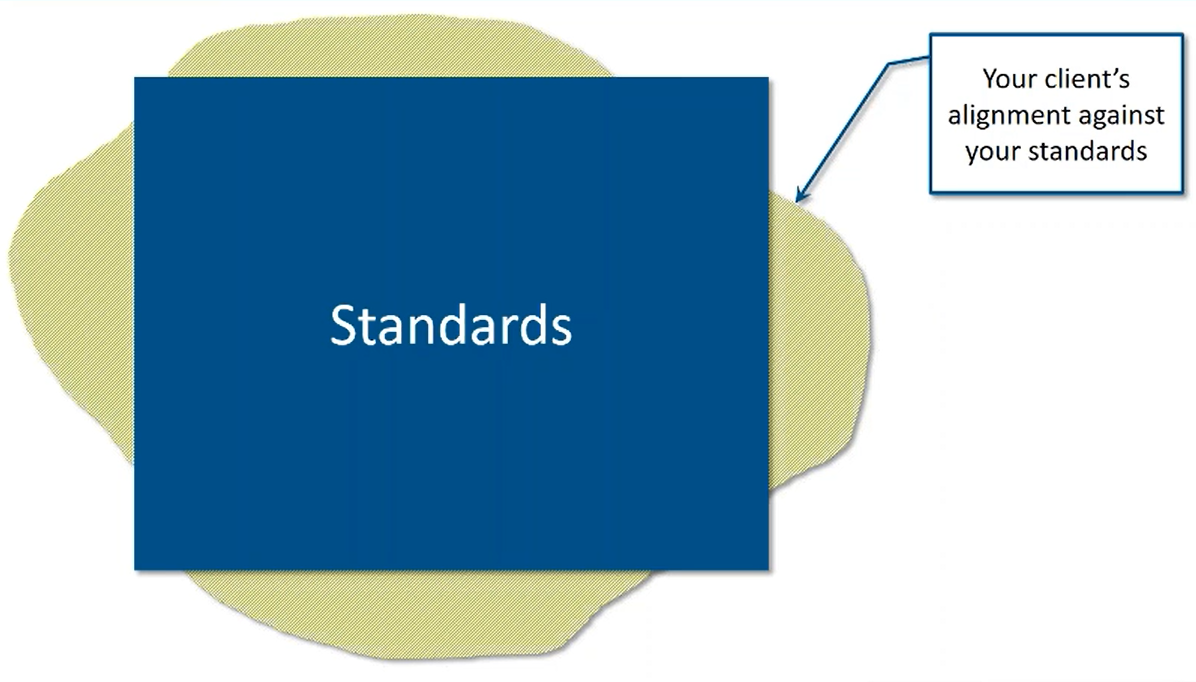We all use standards. We use them to judge ourselves and others. We use them to evaluate products and services — and, most importantly, we use standards to predict results, for our own businesses and those we serve.
At TruMethods, when it comes to standards, there are two critical roles we more often than not put front and center: Network Administrator and vCIO.
Network Administrator
Now, Network Administrator may sound familiar (it gets thrown around a lot in the channel — we know that), but it’s important we first define this role. Working to monitor systems and upgrade networks before problems arise, the Network Administrator is proactive. Network Administrators gather detailed technology alignment information needed to make strong recommendations. This role ultimately aligns your technical standards overall; ultimately, Network Administrators create the box within the blob.

“What’s in the box?”
Ignore the movie reference for now, and let’s examine the question. The box contains our standards as IT providers. In the ideal world, what would your standards be? Remember: These are your standards; they’re not what your clients want. Take your standards and pack them tightly into your blue box.
“The Blob”
(I just can’t help myself.) Think of the green blob as the real world. You can’t control the blob; it’s unpredictable. If you don’t have standards, you don’t have a box — you just have a blob. We’re anti-blob at TruMethods. Another thing to consider: The blob varies from client to client. Clients will always dip in and out of standards. Network Administrators evaluate standards; in other words, they determine where clients are aligned and where they’re not. This alignment process is performed on a regular basis. The results are then given to the vCIO.
vCIO (Virtual Chief Information Officer)
The vCIO provides strategic direction, sets an IT budget, implements new IT systems and reviews and reports on the state of the IT department. Basically, IT providers offering vCIO services are giving clients an alternative to investing in a costly c-suite executive position. True vCIOs use alignment results to push the blob back in the box by building IT roadmaps for clients.
How myITprocess Can Help
TruMethods’ myITprocess platform can help you with demonstrating your service value in the following ways: creating and organizing technology standards, ensuring alignment and forming strategic partnerships.
With regard to standards, to make things easier for IT providers, the platform leverages a three-tier system: sections (broader ideas topics), categories (technical items) and questions (the standards themselves). Standards ensure your technicians are following the same thought process.
The Network Administrator and vCIO tag team the alignment process. While the former assesses the technical risk, the latter evaluates the business risk. The myITprocess platform enables both players to execute their roles through a interface designed to provide transparency and uniformity.
myITprocess allows vCIOs to manage relationships with clients. One example of this is the platform gives a vCIO the opportunity to generate IT roadmaps.
At the end of the day, the goal isn’t to drown clients in the details. Your role as an IT provider is to prioritize risk, inform and educate. Using standards and creating a process helps accomplish this. Your network administrator and vCIO are there to keep clients aligned and away from the blob.


